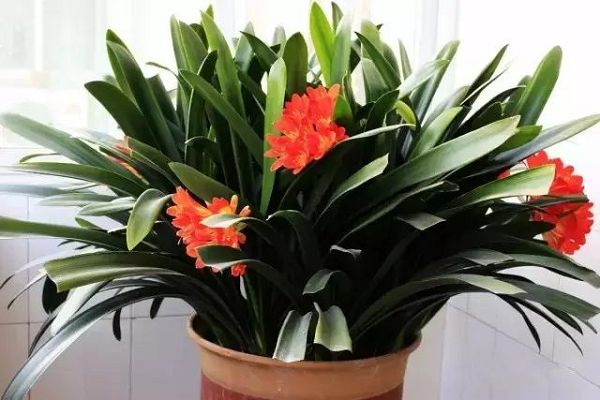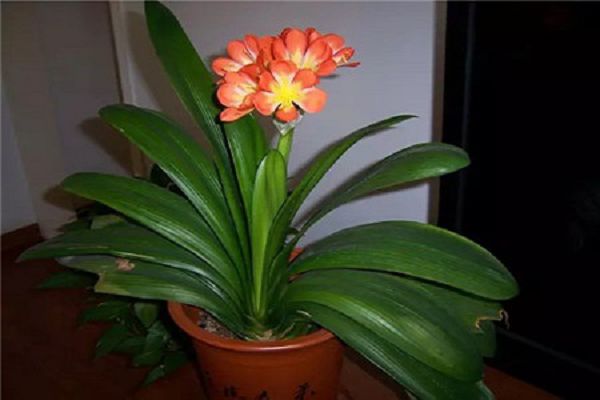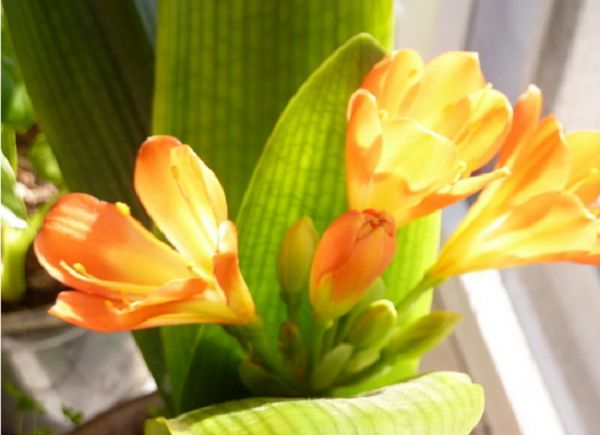The gentleman orchid is succulent. The yellow leaves grow slowly and the leaves fall off, but the roots are not well raised.

As the saying goes, growing flowers and roots, many flowers always appear the phenomenon of growing slowly and the dry tip of yellow leaves. In fact, the root is not cultivated well at all. Today, Huahua will introduce to you the root cultivation methods of the three kinds of flowers: gentleman orchid, succulent flower and orchid. Learn to grow the root system of white flowers.
The great method of nourishing roots of gentleman orchids
How to take root?
If you want to raise your orchid well, you must first raise your roots well. if you want to raise your roots well, you need to make efforts in the following three aspects: soil allocation, watering and fertilization.
1. Distribution of soil
Magnolia is a fleshy root, the soil must be loose and breathable, and there is a certain degree of water retention, must not use pure garden soil to raise magnolia, it is easy to rot roots, not long. Florists who do not know how to match the soil can follow the following methods:
① 20% pine needle + 10% coarse sand + 50% rotten leaf + 10% charcoal + 10% other
② 20% river sand + 20% humus soil + 40% pine bark
③ 5% charcoal + 20% pine needles + 60% rotten leaves + 15% sand
two。 Watering
Gentleman orchid watering is generally the principle of no dry, no watering, absolutely no stagnant water.
When watering, poke your fingers or chopsticks into the soil. If you feel wet, you can't water them. If you feel dry, you can water them thoroughly.
3. Fertilizer application
Gentleman orchids like fertilizer, especially in the spring and autumn growing season, we can change the basin, fried melon seeds, castor seeds or bone powder sprinkled with the bottom of the basin as the base fertilizer, the base fertilizer accounts for about 10% of the whole basin soil.
In addition to the base fertilizer, the gentleman orchid can also apply thin rotten bean cake water every 10 days or so, and apply fish fishy water or phosphate and potassium fertilizer before flowering at the end of autumn.
How to lure the root?
The gentleman orchid is easy to rot, but can't it be saved after the rotten root? Not necessarily, sometimes even if the root is rotten, Huahua can teach you to bring it back to life.
1. Cut off the rotten root system of the orchid, leave nothing left, sterilize the carbendazim for 15-30 minutes, and leave it in a cool and ventilated place for 1 hour.
two。 Prepare a glass bottle or plastic bottle, put in the sand, spray the sand with water.
3. Bury the rootless orchid base in the sand, so that the orchid can stand on the line, not too deep.
4. Spray water on the sand every day to moisturize, about 10-15 days, the gentleman orchid will be able to produce white fat roots.
The great method of succulent root cultivation
How to take root?
Succulent ah, root is the top priority, because if you are not careful, it will rot roots to show you, so if you want to make succulent plants fat, cute and colorful, you must first learn to grow roots.
1. Distribution of soil
Succulent soil is old and important, it must be loose and breathable, and the proportion of particles should account for half or more, otherwise the stagnant water in the roots is easy to rot the roots, soil matching can refer to the following scheme.
In the windowsill, balcony and other places with low humidity and good ventilation, it can be prepared according to the ratio of perlite: peat soil: coarse sand: Rice husk charcoal = 2: 4: 1: 1.
In greenhouses, greenhouses, etc., where the humidity is high and the heat is hot, the ratio of rotten leaf soil: perlite: red jade soil: coarse sand = 3 / 3 / 3 / 1 / 1 can be used.
two。 Watering
Succulent watering must not be too much, do not dry do not water, until the surface of the basin soil is white or when it is very light.
Spring-autumn type and winter type species are watered 1-2 times a month in summer, 3-4 times a month in spring and autumn, and 1-2 times a month in winter.
The summer type is succulent, watering 3-4 times a month in summer, 1-2 times a month in winter, and 2 times a month in spring.
3. Flowerpot
Succulent pots must be breathable, use more pottery pots, less plastic pots, glass pots, and there must be air holes in the bottom of the basin.
How to lure the root?
Succulent plants with beheaded heads or succulent leaves do not take root for a long time in the soil. Are you in a hurry and always want to pull them out and have a look? Don't worry, Huahua will introduce a way to make succulent plants take root quickly today.
1. Just cut succulent do not worry about cutting, must first dry in a cool and ventilated place for 1-2 days, waiting for the wound scab to heal.
two。 Find a plastic bottle or glass bottle, pour into the water, insert the succulent stem into the mouth of the bottle, pay attention to the water level, the bottom of the stem is close to the water surface, but do not touch the water.
3. Put the whole root trapping device in a place with astigmatism and ventilation, and the fine roots can be seen in about 3-5 days. When the root system grows to about 2 cm, it can be transplanted into the flowerpot.
4. If you want succulent leaves to take root quickly, you can find a plastic bottle, fill half a bottle of water, insert a few holes in the water surface, and insert the leaves to take root quickly.
The method of raising the Root of Orchid
A good orchid with excellent appearance and blooming year after year must have a white and strong root system, otherwise the root system is very thin and weak. Root cultivation is the most important thing for an orchid.
How to take root?
1. Planting material
Good orchid, plant material is very important, both breathable and water conservation, particles to account for at least half, Huahua here recommended to you 2 recipes.
Simple formula, perlite: rotten leaf soil = 1:1.
Relatively complex formula, perlite: rotten leaf soil: pond foundation stone: serpent sawdust: fairy soil: coconut bran = 1purl 1purl 1rig 1rig 0.5
two。 Watering
Not dry, not wet, but moist, absolutely not stagnant water, nor long-term lack of water.
We can pot soil color is dark, feel wet feeling, moss some moldy, indicating that the basin soil is too wet, must not be watered.
On the contrary, when you see that the color of the basin soil becomes light and white, the basin soil feels hard, and when the moss on the surface of the basin soil wilts, it should be watered immediately until the bottom of the basin runs water.
In spring and autumn, watering in the morning is moderate; in summer, watering before and after sunrise or sunset increases; in winter, watering at noon decreases. In spring, summer and autumn, the surface of basin soil is often sprayed with water to moisturize.
3. Fertilizer application
In the spring and autumn growing season, compound fertilizer rich in nitrogen, phosphorus and potassium should be applied once every 7-10 days. The fertilizer should be dissolved in water, and the orchid should be irrigated with more water. We can also apply some organic fertilizer by ourselves, and we can apply rotten bean cake fertilizer in spring and some rotten fish water and rice washing water in autumn.
How to lure the root?
Too much watering of orchids leads to rotten roots, or empty roots over a long period of time, all need to be cut off, and after cutting off, how to let orchids grow new roots?
1. Remove the orchid from the pot and wash the soil on the root with clean water.
two。 Cut off all the rotten roots and empty roots in the orchid root system, and apply plant ash or carbendazim to disinfect the wound, and dry in an astigmatic ventilation place for 15-30 minutes.
3. Prepare the water moss, soak it in advance, soak it thoroughly and hold it with your hands for a few times until you don't get out of the water, but you can feel the moisture with your hands.
4. Wrap the root of the orchid in water moss and put it in the flowerpot.
Spray water once every 5.4-7 days to keep the water moss in a moist but non-stagnant state. In about 15-20 days, the orchid will grow white, tender and sturdy roots, which is particularly gratifying.
Related
- Is the orchid suitable for indoor use? Is it good for the body?
- How to prevent the empty root of orchids?
- What to do after the crab claw orchid is withered?
- Why are the leaves of orchids always yellow? Fertilizing and watering.
- Can the root of the gentleman orchid be saved if it is rotten?
- Diagnosis and treatment of cotton-blowing beetle insects in Cymbidium
- There is a way for a gentleman's orchid to rot.
- What is the most suitable temperature and humidity for the orchid?
- How to raise a gentleman's orchid? Cultivation techniques of Cymbidium
- How to prepare the nutritive soil for the cultivation of Cymbidium



